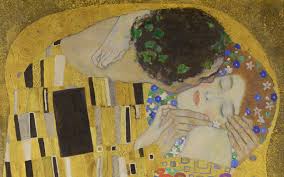
Love, in its myriad forms, has been a subject of fascination and inquiry for millennia. From ancient philosophers to modern psychologists, the concept of love has been dissected, analyzed, and celebrated. At the heart of this exploration lies the profound understanding of the art of loving. Beyond mere emotion, it encompasses a complex interplay of psychology, biology, and philosophy. In this article, we embark on a journey to unravel the intricacies of love, delving into its essence, manifestations, and the profound impact it has on our lives.
Understanding Love:
Love defies simplistic definitions; it transcends boundaries of language and culture. Psychologist Erich Fromm, in his seminal work “The Art of Loving,” proposed that love is not merely a feeling but an art that requires knowledge and effort. He distinguished between love as a noun, a static state of being, and love as a verb, an active process of giving, caring, and understanding.
Types of Love:
Love manifests in various forms, each with its unique characteristics and dynamics. Philia, or friendship love, is rooted in companionship, mutual respect, and shared interests. Eros, the romantic love celebrated in literature and art, ignites passion and desire between individuals. Agape, often described as unconditional love, transcends personal interests and involves selflessness and compassion. Understanding these distinctions enables us to navigate the complexities of our relationships with greater clarity and empathy.
The Neuroscience of Love:
From a biological perspective, love is intricately tied to brain chemistry. Neurotransmitters such as dopamine, oxytocin, and serotonin play crucial roles in bonding, pleasure, and attachment. Romantic love, in particular, activates regions of the brain associated with reward and motivation, akin to the effects of addictive substances. These neural mechanisms shed light on the intensity and euphoria experienced in the throes of infatuation.
Cultivating Love:
The art of loving is not innate but cultivated through conscious effort and practice. It requires vulnerability, empathy, and a willingness to prioritize the well-being of others. Effective communication, active listening, and emotional intelligence are essential skills in nurturing healthy relationships. Moreover, self-love forms the foundation upon which all other forms of love flourish. By cultivating a compassionate relationship with oneself, individuals are better equipped to extend love outwardly.
Challenges and Growth:
Despite its transformative potential, love is not immune to challenges and conflicts. Miscommunication, trust issues, and external stressors can strain even the strongest bonds. However, it is through these trials that love has the opportunity to deepen and evolve. Conflict resolution, forgiveness, and mutual support are integral components of relational growth. Embracing imperfections and embracing vulnerability fosters greater intimacy and connection.
The Cultural Context:
The expression and understanding of love are deeply influenced by cultural norms and traditions. Different societies prioritize various aspects of love, whether familial duty, romantic passion, or communal solidarity. Furthermore, societal expectations and gender roles shape individuals’ perceptions of love and relationships. Recognizing and respecting cultural diversity enriches our appreciation of the multifaceted nature of love.
Love in Practice:
Ultimately, the art of loving is a lifelong journey of growth, discovery, and connection. It requires courage to open oneself to vulnerability, resilience to navigate challenges, and humility to learn from mistakes. Through acts of kindness, empathy, and compassion, we contribute to the collective tapestry of love that binds humanity together. As Erich Fromm eloquently stated, “Love is a decision, it is a judgment, it is a promise. If love were only a feeling, there would be no basis for the promise to love each other forever.”
Conclusion:
In a world often characterized by division and strife, the art of loving stands as a beacon of hope and healing. It transcends boundaries, unites hearts, and reminds us of our shared humanity. By embracing love in all its forms, we enrich our lives and contribute to a more compassionate and interconnected world. As we continue to explore the depths of the human experience, let us cherish and nurture the profound art of loving.